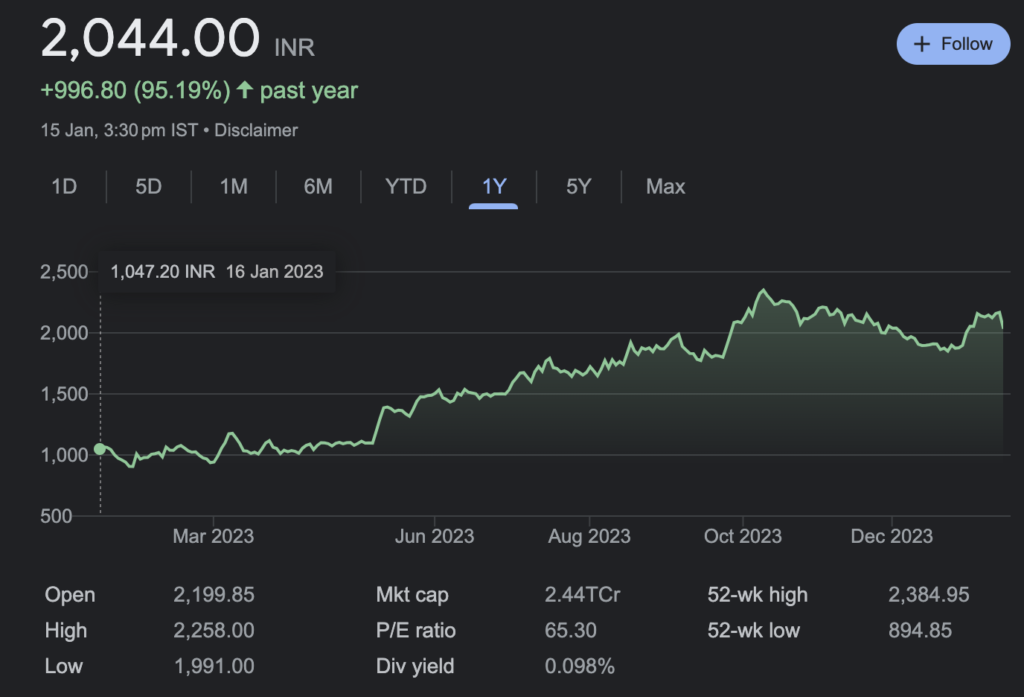Uncategorized
The Importance of Topline and Bottom Line Growth in Business

In the world of business, financial metrics play a crucial role in assessing the health and performance of a company. Two key metrics that are often used to evaluate the financial standing of a business are Topline and Bottom Line Growth. These terms are used to refer to two different but related aspects of a company’s financials: the topline represents the gross revenue, while the bottom line reflects the net income.
Understanding Topline and Bottom Line Growth
1. Defining Topline and Bottom Line
At its core, the topline is the total revenue generated by a company from its various operations, including sales, services, and any other income sources. On the other hand, the bottom line represents the net income left after deducting all expenses from the gross revenue.
2. Topline Growth: Driving Total Revenue
Topline growth refers to the increase in a company’s total revenue over a specific period. Achieving topline growth is essential for any business as it indicates an expansion in the company’s operations and market reach. Several factors contribute to topline growth, including:
- Increasing Sales Prices: Raising the prices of products or services can directly impact the topline, leading to higher revenue generation. However, companies must strike a balance to avoid losing customers due to exorbitant pricing.
- Expanding into New Markets: Exploring new markets, either geographically or through different customer segments, can open up fresh revenue streams and bolster the topline growth.
- Launching New Products or Services: Introducing innovative offerings that cater to consumer demands can lead to increased sales and overall revenue growth.
3. Bottom Line Growth: Maximizing Net Income
While topline growth is crucial, it is not the only indicator of a company’s financial health. Bottom line growth focuses on enhancing net income by effectively managing expenses and increasing profitability. Key drivers for bottom line growth include:
- Controlling Expenses: Minimizing operating expenses and optimizing cost structures can directly impact the bottom line, leading to higher net income.
- Improving Profit Margins: Reducing the cost of goods sold (COGS) can enhance profit margins, thus contributing to bottom line growth.
- Increasing Topline Growth: As mentioned earlier, a well-managed topline growth can positively influence the bottom line by increasing overall revenue.
4. The Balance Between Topline and Bottom Line Growth
It is essential for businesses to strike a balance between topline and bottom line growth. Simply focusing on one aspect while neglecting the other can lead to an imbalanced financial performance. Companies should seek to increase revenue while keeping a close eye on expenses to ensure sustainable growth and long-term profitability.
Factors Affecting Topline and Bottom Line Growth
The interplay between topline and bottom line growth is influenced by various factors:
1. Sales Prices
- Proper pricing strategies can lead to revenue growth without compromising profit margins.
2. Marketing and Sales
- Effective marketing and sales efforts can attract more customers, boosting overall revenue.
3. Cost of Goods Sold (COGS)
- Reducing COGS can positively impact profit margins and bottom line growth.
4. Operating Expenses
- Streamlining operating expenses can contribute to increased net income and bottom line growth.
Conclusion
In conclusion, both topline and bottom line growth are crucial metrics for evaluating a company’s financial performance. While topline growth signifies increased revenue, bottom line growth reflects the net income after deducting expenses. Striking a balance between the two is essential for sustainable and profitable business operations.
Businesses must adopt strategies that focus on increasing revenue through factors like pricing, marketing, and expanding into new markets. Simultaneously, careful management of expenses, cost optimization, and efficiency improvements are vital to maximize profitability.
key difference between topline and bottom line growth in a company’s financial performance
The key difference between topline and bottom line growth in a company’s financial performance is that topline growth only measures a company’s revenue, while bottom line growth measures both revenue and expenses. This means that a company can have topline growth without bottom line growth, if its expenses are increasing at a faster rate than its revenue.
For example, a company might increase its topline by 10% by raising its sales prices. However, if its expenses also increase by 10%, then its bottom line will not grow at all.
Here is a table that summarizes the key differences between topline and bottom line growth:
| Characteristic | Topline Growth | Bottom Line Growth |
|---|---|---|
| Definition | Increase in a company’s total revenue | Increase in a company’s net income |
| Formula | Revenue / Previous Period Revenue * 100 | Net Income / Previous Period Net Income * 100 |
| Factors that affect it | Sales prices, marketing and sales, cost of goods sold, operating expenses | Sales prices, marketing and sales, cost of goods sold, operating expenses, other expenses |
| Importance | Important for measuring a company’s growth | Important for measuring a company’s profitability |
In general, companies want to achieve both topline and bottom line growth. This means that they need to find ways to increase their revenue while also controlling their expenses.
Here are some examples of how companies can achieve both topline and bottom line growth:
- Increase sales prices: This will increase revenue, but it may also lead to a decrease in customer demand.
- Invest in marketing and sales: This can help a company reach new customers and sell more products or services.
- Reduce cost of goods sold: This can be done by negotiating better prices with suppliers, finding more efficient ways to produce products or services, or reducing waste.
- Reduce operating expenses: This can be done by negotiating better deals on rent or utilities, reducing the number of employees, or finding more efficient ways to run the business.
By taking steps to increase their revenue and control their expenses, companies can achieve both topline and bottom line growth. This will help them to increase their profits and become more successful.
FAQs
1. Can a company have topline growth without bottom line growth?
Yes, a company can experience topline growth without bottom line growth if its expenses increase at a faster rate than its revenue. This situation can lead to reduced profitability despite higher revenue.
2. What happens if a company raises its sales prices too high?
If a company sets excessively high sales prices, it runs the risk of losing customers, which may negatively impact revenue and overall financial performance.
3. How can reducing the cost of goods sold (COGS) contribute to bottom-line growth?
By reducing COGS, a company can improve its profit margins, allowing more revenue to translate into net income and enhancing bottom line growth.
4. Why is it important for companies to balance topline and bottom-line growth?
Balancing topline and bottomline growth ensures a sustainable and profitable business model. Overemphasizing one aspect while neglecting the other can lead to financial instability.
5. What is the key to achieving sustainable growth and profitability?
The key lies in effectively managing revenue growth through various strategies while simultaneously controlling expenses and optimizing cost structures to maximize profitability.
Uncategorized
IREDA partners with PNB for Power Renewable Energy Projects, stock trades down

New Delhi, February 19, 2024 – The Indian Renewable Energy Development Agency Ltd. (IREDA) and Punjab National Bank (PNB) have formed a strategic alliance, signing a Memorandum of Understanding (MoU) to boost renewable energy initiatives across India. This collaboration aims to co-finance and syndicate loans for diverse renewable energy projects, marking a significant step towards achieving sustainable energy goals. Despite this the stock trades negative in the early session.
Strengthening Renewable Energy Financing
In a significant move at IREDA’s New Delhi office, Dr. R. C. Sharma, IREDA’s General Manager, and Shri Rajeeva, PNB’s Chief General Manager, inked the MoU. This event, witnessed by Shri Pradip Kumar Das, IREDA’s CMD, and Shri Atul Kumar Goel, PNB’s MD & CEO, along with senior officials from both entities, sets the stage for a transformative partnership in renewable energy financing.
A United Front for Green Energy
“This strategic partnership between IREDA and PNB represents a major leap in our mission to accelerate renewable energy growth in India,” stated Shri Pradip Kumar Das, CMD of IREDA. By leveraging their combined strengths, IREDA and PNB are committed to offering substantial financial backing to renewable energy projects, thus supporting sustainability and environmental conservation. This initiative aligns perfectly with the Hon’ble Prime Minister’s COP26 announcement to achieve a 500 GW Non-Fossil-based electricity generation capacity by 2030.
Broadening Support for Renewable Projects
The MoU includes provisions for joint lending, loan syndication, and underwriting, as well as managing Trust and Retention Account (TRA) for IREDA borrowers. It also facilitates investments in bonds issued by either organization, ensuring competitive terms of sanction and pricing for IREDA borrowings.
Building a Coalition for Clean Energy
IREDA’s collaboration with PNB enhances its portfolio of partnerships with premier financial institutions aimed at co-lending and loan syndication for renewable energy projects across India. Moreover, these strategic alliances underscore the collective drive towards meeting India’s renewable energy aspirations.
Recent development for IREDA
Bhubaneswar, February 11 – IREDA takes a groundbreaking step by partnering with the Indian Institute of Technology, Bhubaneswar, to foster innovation and research in the renewable energy sector. Signed at the 100 Cube Start-up Conclave at IIT Bhubaneswar, this MoU aims to support collaborative innovation, technology transfer, and the nurturing of the start-up ecosystem in renewable energy.
Pioneering Renewable Energy Research
Shri Pradip Kumar Das, CMD of IREDA, and Dr. Debi Prasad Dogra, Independent Director of IIT Bhubaneswar, sealed the partnership in the presence of Shri Dharmendra Pradhan, the Hon’ble Union Minister, and Prof. Shreepad Karmalkar, Director of IIT Bhubaneswar. “Our partnership with IIT Bhubaneswar marks a pivotal milestone in promoting sustainable development and innovation within the renewable energy sector,” said Shri Pradip Kumar Das.
Advancing Clean Energy Development
The collaboration promises to jumpstart joint research initiatives, facilitate technology transfers, and offer comprehensive support to start-ups in clean energy. It also includes capacity-building efforts such as training programs and workshops to bolster IREDA officials’ expertise in renewable energy.
Why IREDA share is going up?
Litsed just a month ago, shares of IREDA have more than doubled in the PSU rally. This increase in stock price is primarily because of the PSU stock growth we witnessed in the early half of Febuary. Moreover, we feel the stock was undervalued at a listing price. Despite the recent up stock currently trades at a PE of 35, this is fairly valued as per the valuations of the competitors. Investors must explore into balance sheet of companies before making a buy or sell decision.
Embracing a Sustainable Future
These partnerships signal IREDA’s commitment to advancing India’s renewable energy capabilities. Through strategic collaborations and fostering innovation, IREDA aims to pave the way for a sustainable and energy-secure future, aligning with national and global clean energy targets. Read more on renewable energy and Tata Power below.
Also follow us on Tradealone for more such timely updates on your favourite stocks.
Uncategorized
Manorama Industries Limited Takes New Steps in Stock Split and Business Growth

Key Developments at Manorama Industries
Raipur, January 15th, 2024 – Manorama Industries Limited, a front-runner in specialty fats, butters, and exotic products, is hitting the headlines with two major announcements that could reshape its market presence and shareholder value.
1:5 Stock Split: Making Shares More Accessible
The Board of Directors has given the green light to a stock split, changing the face value of its shares from INR 10 to INR 2. What does this mean for investors? Simply put, it’s going to make the company’s shares more affordable and increase their liquidity in the market. A smart move that could attract more investors!
Geographic Expansion and Product Diversification
The company isn’t just stopping at a stock split. They’re setting their sights on bigger, global goals. Manorama plans to strengthen its roots in key international markets by setting up entities in the UAE, Russia, and other strategic locations. This expansion aims to bolster their business operations significantly.
Chocolate & Confectionery: The New Frontier
But there’s more brewing at Manorama. They’re eyeing the lucrative Chocolate & Confectionery sector. Think real chocolate, super compound slabs, compound chocolate, and specialty cocoa products. It’s a natural extension of their existing business line, tapping into both domestic and international markets.
Updates and Developments:
- New Fractionation Plant: The company is gearing up to complete its new fractionation plant’s CAPEX by FY24. This expansion is set to boost its production capacity, solidifying its position in the global market for CBE and specialty butter & fats.
- Credit Rating Upgrade: Manorama’s commitment to growth and excellence has been recognized with an upgraded credit rating by CARE, now standing at ‘CARE A-, Stable’.
- Investor Relations: Ernst & Young LLP has been roped in to manage their investor relations, signaling a step towards strengthening stakeholder communication.
- Manorama Industries share has jumped around 100% in the last 1 year, doubling from 1000 to 2000 rupees per share. It’d be interesting to see how the stock price reacts to this news.

Words from the President
Mr. Ashish Saraf, President of Manorama Industries, expresses confidence in these strategic moves. The stock split, geographic expansion, and foray into new product lines are not just about growth but also about enhancing shareholder value and meeting global demands.
About Manorama Industries Limited (MIL)
Since 2005, MIL has been a leader in the manufacturing of specialty fats & butters. With a focus on R&D and quality, MIL offers customized solutions to top global companies. Their commitment to ESG practices underscores their dedication to sustainable and responsible growth.
Uncategorized
EaseMy Trip jumps into the Insurance Sector with a New Subsidiary

EaseMy Trip popularly known for for its travel services, just stepped into the insurance world with the launch of its new arm, EaseMyTrip Insurance Broker Private Limited. This move aims to expand their services and cater to the insurance market’s growing needs. By venturing into insurance, the company plans to leverage its customer base of 20 million users.
EaseMy Trip is looking at Opportunities in the Insurance Market
India’s insurance sector is on the rise, with annual growth rates of 32-34%. By 2027, experts believe that the sector can reach a milestone of US$200 billion. EaseMy Trip sees this as an opportunity to expand its offerings and expand its business horizons.
Pioneering Change in the Industry
The incorporation of EaseMyTrip Insurance Broker Private Limited as a distinct entity under the parent brand signifies the company’s dedication to innovation. Mr. Nishant Pitti, a driving force behind the company, takes the helm as the Director, ushering in a new era for the company.
CEO’s Enthusiasm and Vision
Mr. Nishant Pitti, CEO and Co-Founder of EaseMyTrip, is excited about this leap into the insurance domain. He aims to elevate their customer offerings by providing a comprehensive travel ecosystem that now includes insurance solutions.
A Vision for Innovation
EaseMyTrip Insurance Broker Private Limited is set to redefine the insurance sector. Fueled by innovation and a customer-centric approach, the company aims to meet customers’ evolving needs effectively.
A Glimpse into EaseMyTrip
EaseMyTrip, a prominent online travel platform listed on NSE and BSE, has been flourishing at a remarkable rate. Offering end-to-end travel solutions with no booking fees, it provides access to a vast network of airlines, hotels, and transportation services. Read more Finance news with Tradealone.
-

 Profit Making Idea1 year ago
Profit Making Idea1 year agoThe Grandfather Son (GFS) Strategy: A Technical Analysis Trading Strategy
-

 Uncategorized8 months ago
Uncategorized8 months agoA BJP victory and the Stock Market: what to expect this monday
-

 Technology5 months ago
Technology5 months agoInnovative Metro Ticketing Revolution in Pune by Route Mobile and Billeasy’s RCS Messaging. Stock trades flat
-

 editor9 months ago
editor9 months agoHow to research for Multibagger Stocks
-

 Trending12 months ago
Trending12 months agoDoes the “Tata-Apple venture” benefit Tata shares?
-

 Finance World12 months ago
Finance World12 months agoHow Zomato Turned Profitable: A Landmark Achievement in the Indian Food Delivery Market
-

 Market ABC8 months ago
Market ABC8 months agoSpotting an operator game: How to do it?
-

 Market ABC1 year ago
Market ABC1 year agoThe Pullback Strategy: A Timeless Approach to Investment Success

